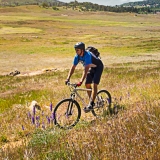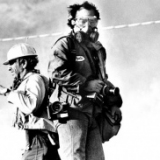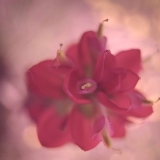- Forum
- General Discussion | Introductions | Off Topic Forum
- Photography General Discussion
- Shooting your shots slightly underexposed
Shooting your shots slightly underexposed
-
 Topic Author
Topic Author
- Zach Mosher
- Snapobsessed
-
- Nikon D800
- Followers: 134
- Posts: 421
-
Points:
8155
Post #640691
But if this is remotely a good practice, then why aren't the manufactures building this into the exposure algorithms these cameras use?
Post #640695
Zach Mosher wrote: I always had a tough time with high contrast shots and recently started to shoot all my shots slight underexposed. All my shots will cross through Lightroom and therefor get some edit work done. I find I get more detail and better control of my highlights doing this way.
But if this is remotely a good practice, then why aren't the manufactures building this into the exposure algorithms these cameras use?
Sony kind of did this and it drives me crazy. It’s anywhere from 1/2-2/3 of a stop low. Shadows can be just as harmful as highlights, especially in some areas of photography, like macro. I find that I can lose detail in dark hair (spiders), and in those tiny little spaces. For birds, the darker feathers can start causing issues too.
At one time photogs “Exposed to the left” to get less highlights, but now that we have histograms, can see what is happening in the field, and digital editing, a lot of photogs have gone the other direction and actually expose slightly right.
Personally, I try to get as close to the correct exposure as possible, but will over/underexpose for certain shots
-

- GaryA
- The Lounger
-
- Fuji Stuff
- Followers: 132
- Posts: 1180
-
Points:
10945
Post #640700
All light meters read for Medium Gray. If you meter off a black wall, center the meter and make a print, it will come out medium gray. If you meter off a white wall, center the meter and make a print, it will come out medium gray. Using the meter as a guide, the photographer needs to adjust the camera settings to properly capture the desired reflective qualities of the scene (either actual or artistic).
The meter is merely a guide. Modern camera's meters are hooked to the camera's onboard computer which interprets the meter's medium gray readings and "automatically" makes adjustments, (right or wrong), which were previously allocated to the photographer.
There are photographs everywhere. It is the call of photographers to see and capture those images.
www: garyayala.com
-

- Nikon Shooter
- Oh Wise One
-
- 3S 3X 810 850
- Followers: 197
- Posts: 13795
-
Points:
88932
Post #640704
Exposing films had the same tolerances, the ONLY important point
is, IMO, that you underexpose at will as long as the histogram (your
best friend at all times!) is good.
The STTR approach is passé with the later developments in cameras;
I teach the STTL so one has the best chance to protect the whites.
Light is free… capturing it is not!
-
 Topic Author
Topic Author
- Zach Mosher
- Snapobsessed
-
- Nikon D800
- Followers: 134
- Posts: 421
-
Points:
8155
Post #640705
Are you checking in camera or do you keep it on your LCD screen?
-
 Topic Author
Topic Author
- Zach Mosher
- Snapobsessed
-
- Nikon D800
- Followers: 134
- Posts: 421
-
Points:
8155
Post #640706
Troponin wrote:
Zach Mosher wrote: I always had a tough time with high contrast shots and recently started to shoot all my shots slight underexposed. All my shots will cross through Lightroom and therefor get some edit work done. I find I get more detail and better control of my highlights doing this way.
But if this is remotely a good practice, then why aren't the manufactures building this into the exposure algorithms these cameras use?
Sony kind of did this and it drives me crazy. It’s anywhere from 1/2-2/3 of a stop low. Shadows can be just as harmful as highlights, especially in some areas of photography, like macro. I find that I can lose detail in dark hair (spiders), and in those tiny little spaces. For birds, the darker feathers can start causing issues too.
At one time photogs “Exposed to the left” to get less highlights, but now that we have histograms, can see what is happening in the field, and digital editing, a lot of photogs have gone the other direction and actually expose slightly right.
Personally, I try to get as close to the correct exposure as possible, but will over/underexpose for certain shots
Didn't know that about the Sony's. But the detail is easier to pull out from an underexposed area vs blown out. I do agree, that the extremes are pretty much PITA regardless.
So what sort of shots will you underexpose for? Give me an example please.
Post #640712
Zach Mosher wrote:
Troponin wrote:
Zach Mosher wrote: I always had a tough time with high contrast shots and recently started to shoot all my shots slight underexposed. All my shots will cross through Lightroom and therefor get some edit work done. I find I get more detail and better control of my highlights doing this way.
But if this is remotely a good practice, then why aren't the manufactures building this into the exposure algorithms these cameras use?
Sony kind of did this and it drives me crazy. It’s anywhere from 1/2-2/3 of a stop low. Shadows can be just as harmful as highlights, especially in some areas of photography, like macro. I find that I can lose detail in dark hair (spiders), and in those tiny little spaces. For birds, the darker feathers can start causing issues too.
At one time photogs “Exposed to the left” to get less highlights, but now that we have histograms, can see what is happening in the field, and digital editing, a lot of photogs have gone the other direction and actually expose slightly right.
Personally, I try to get as close to the correct exposure as possible, but will over/underexpose for certain shots
Didn't know that about the Sony's. But the detail is easier to pull out from an underexposed area vs blown out. I do agree, that the extremes are pretty much PITA regardless.
So what sort of shots will you underexpose for? Give me an example please.
As NS pointed out, a perfect time to underexpose slightly is when you’re dealing with whites, especially in your subject. I had a really long conversation with him on the topic and it was extremely helpful. His white bird shots are pretty killer. You should check them out if you haven’t seen them.
Another situation that can call for underexposure is when dealing with backlighting. It’s not difficult to blow highlights and lose that nice glow affect.
-

- Nikon Shooter
- Oh Wise One
-
- 3S 3X 810 850
- Followers: 197
- Posts: 13795
-
Points:
88932
Post #640717
Zach Mosher wrote: I don't check my histogram till generally in Lightroom.
Forget Lr… it's all on the camera screen — where a quick look
will confirm or infirm your exposure. Really your best friend.
Light is free… capturing it is not!
-
 Topic Author
Topic Author
- Zach Mosher
- Snapobsessed
-
- Nikon D800
- Followers: 134
- Posts: 421
-
Points:
8155
Post #640727
Nikon Shooter wrote:
Zach Mosher wrote: I don't check my histogram till generally in Lightroom.
Forget Lr… it's all on the camera screen — where a quick look
will confirm or infirm your exposure. Really your best friend.
Cool, thank you.
So do you have it showing on your photo preview screen?
Post #640729
Zach Mosher wrote:
Nikon Shooter wrote:
Zach Mosher wrote: I don't check my histogram till generally in Lightroom.
Forget Lr… it's all on the camera screen — where a quick look
will confirm or infirm your exposure. Really your best friend.
Cool, thank you.
So do you have it showing on your photo preview screen?
If there is only one thing on my screen, it’s the histogram. I have it turned on to view at all times.
-

- Nikon Shooter
- Oh Wise One
-
- 3S 3X 810 850
- Followers: 197
- Posts: 13795
-
Points:
88932
Post #640730
Zach Mosher wrote: So do you have it showing on your photo preview screen?
I see my capture and the histogram… I wouldn't be bothered
with the first but the second, as Troponin suggests… a MUST.
Light is free… capturing it is not!
-

- the four vignettes
- Has the Hang of it
-
- D850,D4s
- Followers: 57
- Posts: 64
-
Points:
1862
Post #640731
YMMV
-

- garyrhook
- Oh Wise One
-
- Nikon D850, Nikon D750, Panasonic G7K
- Followers: 912
- Posts: 11103
-
Points:
67681
Post #640735
Nonetheless, one must know how the image on the camera display translates to reality. And whether flagged highlights on the LCD are actually a problem. And how your sensor handles shadows. And whether each can be recovered/managed in post.
I'd rather deal with under- than overexposed any day. You can't recover data that's lost to blow-outs.
It all comes down to knowing your equipment and what can be accomplished in post.
Post #640758
-

- Chase Audate
- Has the Hang of it
-
- Nikon D7500
- Followers: 68
- Posts: 95
-
Points:
2251
Post #640838
- Forum
- General Discussion | Introductions | Off Topic Forum
- Photography General Discussion
- Shooting your shots slightly underexposed
Latest Reviews
Nikon’s retro-looking Nikon Zfc is anything but retro. Under its classic body is a host of features and amenities that make it a worthwhile compact mirrorless camera for 2024.
The Canon EOS R50 is one of the newest R-system cameras from Canon. Is it worth your money? Find out all the details you need to know in this comprehensive review.
The Sony FE 70-200mm f/2.8 GM OSS II is Sony’s flagship mirrorless zoom lens. As such, it’s loaded with features and has a top-shelf build quality that makes it a top pick!
The Leica SL2-S is an attractive, premium mirrorless camera with photo and video specs that are sure to impress. And with the legendary Leica name, you know this camera exudes quality!
Forum Top Posters
-
1TCav 7 posts
-
2CharleyL 5 posts
-
3Razky 5 posts
-
4Randy Shaw 5 posts
-
5Prago 4 posts
-
6Matt VanDyke 4 posts
-
7Otto F 4 posts
-
8Conner 3 posts
-
9Sandy Smith Photos 3 posts
-
10Hassner 3 posts
Latest Articles
The Olympus OM-D E-M10 Mark IV is a micro four thirds camera released in 2020. It’s an entry-level system along with the OM-D E-M5 Mark III. Use this guide to determine which one is best for you!
Blue hour photography might not be as well known as golden hour photography, but it is every bit as good a time to create epic images of landscapes. Learn how in this quick tutorial!
Nikon’s retro-looking Nikon Zfc is anything but retro. Under its classic body is a host of features and amenities that make it a worthwhile compact mirrorless camera for 2024.
Moving from taking snapshots of your dog to creating beautiful images doesn’t have to be that difficult! Use the tips outlined in this dog photography guide, and you’ll get better results in no time.
Acrylic print photos are a beautiful way to display your favorite images. But they don’t come without some questions. Get all the answers you need about this medium in this guide!
Where do you get your landscape photography inspiration? Is it from masters like Ansel Adams? Or perhaps viewing art from other genres? We’ve got these and a few other sources for you to check out!
The Canon EOS R50 is one of the newest R-system cameras from Canon. Is it worth your money? Find out all the details you need to know in this comprehensive review.
Too often, affordable online printing companies don’t meet your expectations of what a print should look like. But there are some choices that combine affordability with superb quality!
















